#hector bottai
Explore tagged Tumblr posts
Photo

A new variant has been added!
Araguaia Spinetail (Synallaxis simoni) © Hector Bottai
It hatches from bright, brown, long, near, sharp, spiky, typical, and white eggs.
squawkoverflow - the ultimate bird collecting game 🥚 hatch ❤️ collect 🤝 connect
4 notes
·
View notes
Text
I love the Tyrants. They are universally tiny little fluffballs that go peep
The closest relative of this Cock-tailed Tyrant is the Strange-tailed Tyrant. Which, yeah, it is:

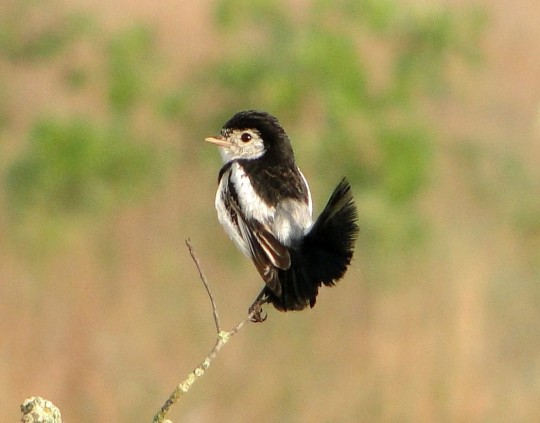
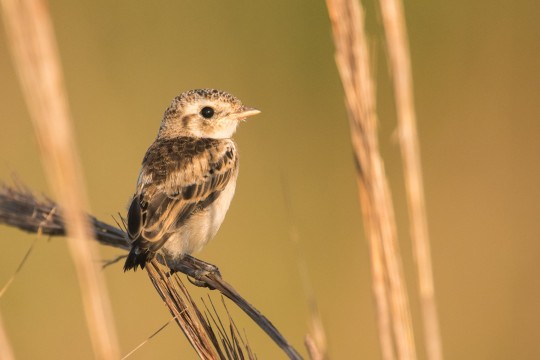
[2524/11080] Cock-tailed tyrant - Alectrurus tricolor
(top photo: adult male, bottom photo: juvenile)
Order: Passeriformes Suborder: Tyranni Family: Tyrannidae (tyrant flycatchers)
Photo credit: Carlos Otávio Gussoni/Claudia Brasileiro
429 notes
·
View notes
Note
Hi there! An odd sort of question, but is there some unspoken convention on bestowing colorful monikers upon hummingbird species?
For example, those broad categories of Sunangels, Visorbearers, Coquettes, and others... my favorite among them is the Marvelous Spatuletail. They all seem to have had special attention when being identified, and I thought perhaps there was some logic, if not tradition, behind the naming.
Thank you for any insight, and thank you for curating this beautiful blog!
Hummingbird Names:
Yes, there really is a convention of giving hummingbirds ridiculously colorful and creative names...
Ruby Topaz, Tourmaline Sun-angel, Tufted Coquette, etc...
Linneaus described a lot of these hummingbirds, but I can't remember if he was the one who named them in English.
Obviously, there is a huge variety of hummingbirds, with a variety of amazing coloration. We can't just name them after colors and patterns, or we'd run out of naming pretty quickly, so ornithologists started going with more poetic naming.
I personally REALLY LIKE IT!

Fiery Topaz (Topaza pyra), male singing, family Trochilidae, order Apodiformes, Acre, Brazil
photograph by Hector Bottai
220 notes
·
View notes
Text
Rufiphonia Vázquez-López & Hernández-Baños, 2024 (new genus)

(A male individual of Rufiphonia rufiventris, photographed by Hector Bottai, under CC BY-SA 4.0)
Meaning of name: Not explained by authors, but presumably Rufiphonia = rufous [in Latin] Euphonia [genus of finches including the white-vented euphonia]
Species included: R. rufiventris (rufous-bellied euphonia, type species, previously in Euphonia), R. anneae (tawny-capped euphonia, previously in Euphonia), R. cayennensis (golden-sided euphonia, previously in Euphonia), R. fulvicrissa (fulvous-vented euphonia, previously in Euphonia), R. gouldi (olive-backed euphonia, previously in Euphonia), R. imitans (spot-crowned euphonia, previously in Euphonia), R. mesochrysa (bronze-green euphonia, previously in Euphonia), R. pectoralis (chestnut-bellied euphonia, previously in Euphonia), and R. xanthogaster (orange-bellied euphonia, previously in Euphonia)
Age: Holocene (Meghalayan), extant
Where found: Humid forests in Central and South America
Notes: Rufiphonia is a genus of euphonias, a group of finches from the tropical Americas in which the males tend to be brightly colored. Unlike most other finches, euphonias feed primarily on fruits instead of seeds, and accordingly they generally have less robust beaks than typical finches.
Currently, only two euphonia genera are recognized, Chlorophonia and Euphonia, each containing a large number of species. However, a new study on the evolutionary history of this group suggests splitting Chlorophonia into two distinct genera and Euphonia into three based on their phylogenetic relationships and anatomical differences. For species traditionally classified in Euphonia, the authors propose limiting Euphonia proper to a group of closely related euphonias in which males tend to have a dark blue throat and yellow belly, resurrecting the old name Phonasca for a second group in which males tend to have a yellow throat, and coining the new name Rufiphonia for a third in which both males and females can have rufous patches on the belly, head, or underside of the tail.
Reference: Vázquez-López, M., S.M. Ramírez-Barrera, A.K. Terrones-Ramírez, S.M. Robles-Bello, A. Nieto-Montes de Oca, K. Ruegg, and B.E. Hernández-Baños. 2024. Biogeographic factors contributing to the diversification of Euphoniinae (Aves, Passeriformes, Fringillidae): a phylogenetic and ancestral areas analysis. ZooKeys 1188: 169–195. doi: 10.3897/zookeys.1188.107047
177 notes
·
View notes
Text

White-striped Warbler by Hector Bottai - Own work, CC BY-SA 3.0
29 notes
·
View notes
Text
🐜🐜🐜 ANT WORLD 🐜🐜🐜
For each of these ant-names there are usually multiple genera. Nearly all of these birds are from Central and South America (except for some exceptions at the end...) Note that sharing an English common name doesn't guarantee a close taxonomic relationship!
1. Antwren (61 spp, Thamnophilidae)
Including Streaked-Antwren (2 spp)
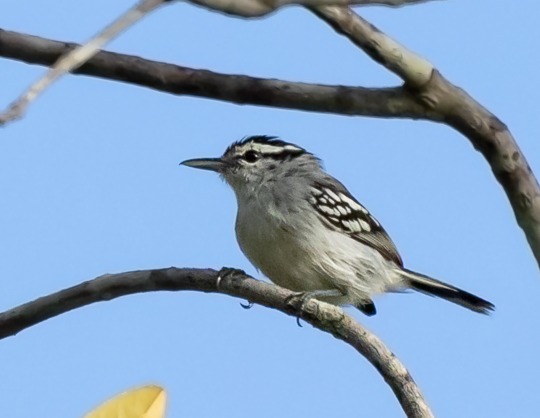
Example: Predicted Antwren, a recently described bird of the Amazon. Photo: Hector Bottai
2. Antshrike (53 spp, Thamnophilidae)
Including Slaty-Antshrike (5 spp)
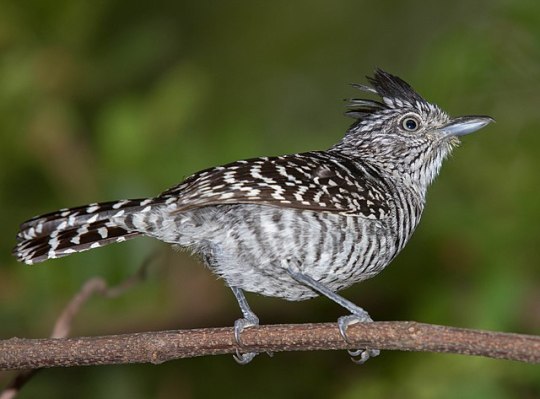
Example: Barred Antshrike. Photo: Wagner Machado Carlos Lemes
3. Antvireo (8 spp, Thamnophilidae)
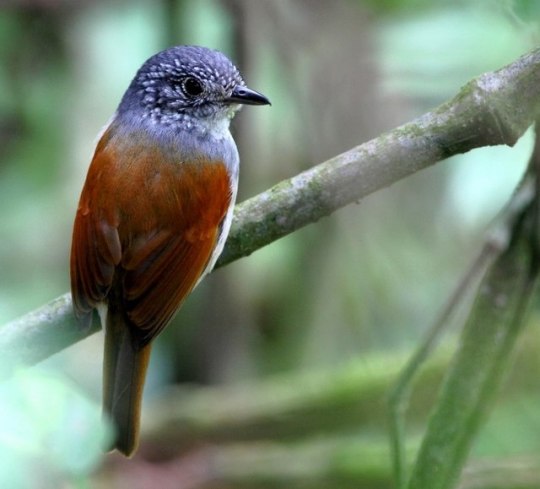
Example: Rufous-backed Antvireo. Photo: Hector Bottai. Yes, Antvireos are real despite winning the poll!
4. Antbird (96 spp, Thamnophilidae)
Including Warbling-Antbirds (7 spp)

Example: Bicolored Antbird. Photo: Matt Dres
5. Antpitta (72 spp, Grallariidae and Conopophagidae)

Example: Jocotoco Antpitta. Photo: Patty McGann
6. Ant-Tanager (5 spp, Cardinalidae)

Example: Crested Ant-Tanager. Photo: Félix Uribe
7. Antpipit (2 spp, Tyrannidae)
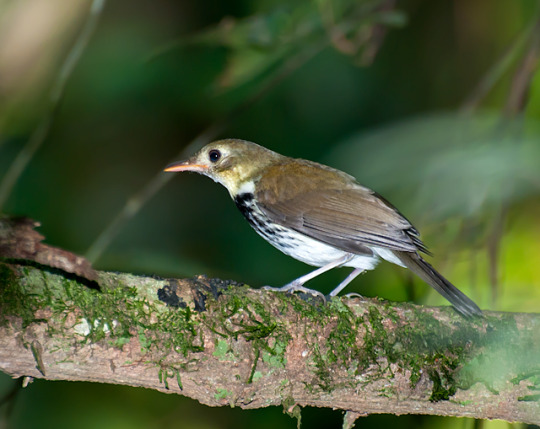
Example: Southern Antpipit. Photo: Dario Sanches
8. Antthrush (12 spp, Formicariidae)

Example: Rufous-capped Antthrush. Photo: Hudson (BirdsRio).
NOT TO BE CONFUSED WITH...
9. Ant-Thrush (2 spp, Turdidae)
A thrush from central Africa?!

Example: White-tailed Ant-Thrush. Photo: Corey Husic
10. Anteater-Chat (2 spp, Muscicapidae)
An old-world flycatcher from southern Africa?!

Example: Southern Anteater-Chat. Photo: Peter Kondrashov
11. Antpecker (3 spp, Estrildidae)
A waxbill finch from East Africa?!

Example: Red-fronted Antpecker. Photo: Adam Riley
So, Ant-Hunter was the fake bird!
If you made it to the end of this post, thantks for reading! And antjoy some ants for the road ahead 🐜🐜🐜🐜🐜🐜🐜🐜🐜🐜🐜🐜🐜🐜
Inspired by me trying to study for a Costa Rica trip and there's just so many Antguys.
#birds#antbirds#ants#taxonomy#grallariidae#conopophagidae#thamnophilidae#formicariidae#turdidae#cardinalidae#tyrannidae#muscicapidae#estrildidae#passeriformes
70 notes
·
View notes
Photo

Orange-breasted falcon (Falco deiroleucus)
The orange-breasted falcon is a bird of the falcon family. It is found from southern Mexico to northern Argentina. It's a medium-sized falcon at 35–40 cm long and a weight of 325–700 grams. It is a bird predator, with strong talons that enable it to catch prey in flight. Living in the predominately tropical climates of Guatemala and Belize, these birds use the humidity of their niche to their advantage. The orange-breasted falcon purposely crashed into leaves of trees with water gathered on them as a form of bathing.
photo credits: Hector Bottai
#Orange-breasted falcon#Falco deiroleucus#falcon#bird#zoology#biology#biodiversity#science#wildlife#nature#animals#cool critters
3K notes
·
View notes
Photo

This adorable little flying gem is a seven-colored Tanager (Tangara fastuosa) from north-eastern Brazil. It is one of a drastically growing number of species that need human protection in order to survive our destruction of its home. Ecologists around the world are relying on citizen scientists to help research vulnerable species like this one. You can find all sorts of citizen science projects to help out with through the link in our bio. 📷 : Hector Bottai/CC-BY-SA-4.0
253 notes
·
View notes
Text
Chondrohierax

Hook-Billed Kite by Hector Bottai, CC BY-SA 3.0
Etymology: Coarse Hawk
First Described By: Lesson, 1843
Classification: Dinosauromorpha, Dinosauriformes, Dracohors, Dinosauria, Saurischia, Eusaurischia, Theropoda, Neotheropoda, Averostra, Tetanurae, Orionides, Avetheropoda, Coelurosauria, Tyrannoraptora, Maniraptoromorpha, Maniraptoriformes, Maniraptora, Pennaraptora, Paraves, Eumaniraptora, Averaptora, Avialae, Euavialae, Avebrevicauda, Pygostaylia, Ornithothoraces, Euornithes, Ornithuromorpha, Ornithurae, Neornithes, Neognathae, Neoaves, Inopinaves, Telluraves, Afroaves, Accipitrimorphae, Accipitriformes, Accipitridae,
Referred Species: C. uncinatus (Hook-Billed Kite), C. wilsonii (Cuban Kite)
Status: Extant, Critically Endangered - Least Concern
Time and Place: Within the last 10,000 years, in the Holocene of the Quaternary


The Hook-billed Kites are known from Cuba, Central, and South America, primarily in more humid habitats such as the Amazon basin

Physical Description: These kites range from 38 to 51 centimeters in length, making them fairly large for flighted birds (but not the largest amongst birds of prey by any means, in that respect they’re middle-of-the-road). They are named for their most distinctive feature - a large, heavy, hooked bill. This bill goes well over the underbill, though it varies extensively across individuals in this genus. The birds have strong feet with sharply curved claws, and somewhat short tails. Their wings are ovular in shape, and interestingly enough the females have more interesting color schemes than the males - while all have grey heads with yellow eye patches, the females have brown backs and reddish-brown stripes across their white bellies, while males continue to be grey, with grey stripes. Some morphs of this genus are very dark in color all over. The juveniles are typically dark brown on top and white underneath, with very few stripes.
Diet: These birds feed primarily on tree snails, interestingly enough, which they break apart with their strong beaks. They also will eat some reptiles, frogs, salamanders, craps, and insects, depending on where they live and the food available in that local.

Hook-Billed Kite by Cláudio Dias Timm
Behavior: These are fairly sluggish raptors, all things considered, spending most of their time in the leafy canopy when not flying around. They do fly extensively, though, and are often seen soaring above the rainforest. They will fly until they find a suitable patch of rainforest, go down into the undergrowth, find a snail in its shell, and break the inner whorls of the shell by cracking it with its beak towards the apex of the spire. It will also swallow some smaller snails whole. It will also sit in a perch in the lower canopy to look for snails, or hop between trees. It usually hunts throughout the day, especially during the nesting season. Fairly silent birds, they only tend to make musical chuckling calls to their mate while perched and flying together. They will also make shrill alarm screams in response to danger, and chattering noises to their babies.
When it comes to breeding, they tend to breed whenever the rainy season starts, based on their individual locations. The two birds will circle each other in courtship, low above the canopy, making those noticeable laughing calls. They then build a flimsy stick nest together, between five and seven meters up in the trees or close to the top of the trees - usually precariously placed on thin branches away from the trunk. They lay up to three eggs, usually two, which are incubated for a little over a month. The male will bring food to the female while she incubates, but when the eggs hatch both parents will feed the young. The chicks then fledge in the early to middle rainy season to take advantage of more plentiful snails. These birds are fairly nomadic - with no distinct migratory pattern, they will move in response to availability of food.
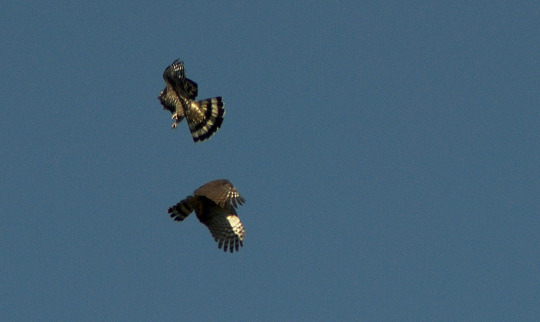
Hook-Billed Kites by Mike Ostrowski, CC BY-SA 2.0
Ecosystem: Hook-Billed Kites will live primarily in rainforests, especially in lower canopies and dense understory, as well as in more temperate zones in the Andes mountains. They can also be found in forest edges and clearings, and while they can get up to higher elevations in the Amazon, they are found in lower elevations in more northern locals. The Cuban Kite will be found in more montane gallery forest with extremely tall trees. The young tend to be preyed upon by jays, but the adults don’t have many predators.
Other: These birds are usually very common, but the Cuban species is very much threatened with extinction due to a limited habitat and excessive human hunting. The mainland species may be rarer in some regions, but overall very common and extending its range northward in response to climate change.
Species Differences: The Hook-Billed Kites, as opposed to the Cuban Kites, have dark bills with only slight yellow patches on the lower bill. Meanwhile, the beaks of Cuban Kites are entirely yellow. The Cuban Kite has a much more limited range (in Cuba only), while Hook-Billed Kites are found all over Central and South America. This limited range, in addition to persecution by humans, has led to the critical endangerment of the Cuban Kites.
~ By Meig Dickson
Sources under the Cut
Bierregaard, R.O., Jr, Kirwan, G.M. & Marks, J.S. (2019). Hook-billed Kite (Chondrohierax uncinatus). In: del Hoyo, J., Elliott, A., Sargatal, J., Christie, D.A. & de Juana, E. (eds.). Handbook of the Birds of the World Alive. Lynx Edicions, Barcelona.
Bond, James (1999). A Field Guide to the Birds of the West Indies. Houghton Mifflin Harcourt. p. 55.
del Hoyo, J., Collar, N., Marks, J.S. & Sharpe, C.J. (2019). Cuban Kite (Chondrohierax wilsonii). In: del Hoyo, J., Elliott, A., Sargatal, J., Christie, D.A. & de Juana, E. (eds.). Handbook of the Birds of the World Alive. Lynx Edicions, Barcelona.
Johnson, Jeff A.; Thorstrom, Russell; Mindell, David P. (2007). "Systematics and conservation of the hook-billed kite including the island taxa from Cuba and Grenada" (PDF). Animal Conservation. 10: 349–359.
#Chondrohierax#Hook-Billed Kite#Kite#Dinosaur#Raptor#Bird of Prey#Dinosaurs#Birds#Bird#Birblr#Cuban Kite#Chondrohierax uncinatus#Chondrohierax wilsonii#Accipitrimorph#Theropod Thursday#Carnivore#North America#South America#Quaternary#Factfile#biology#a dinosaur a day#a-dinosaur-a-day#dinosaur of the day#dinosaur-of-the-day#science#nature
140 notes
·
View notes
Photo

Herpsilochmus praedictus by Hector Bottai
#bird#birds#animal#animals#biology#nature#wildlife#fauna#Passeriformes#Thamnophilidae#Herpsilochmus#Herpsilochmus praedictus
61 notes
·
View notes
Photo

A new variant has been added!
Dotted Tanager (Ixothraupis varia) © Hector Bottai
It hatches from beautiful, bluish, bright, dark, green, high, humid, small, white, and yellow eggs.
squawkoverflow - the ultimate bird collecting game 🥚 hatch ❤️ collect 🤝 connect
7 notes
·
View notes
Video
by Hector Bottai
2 notes
·
View notes
Text
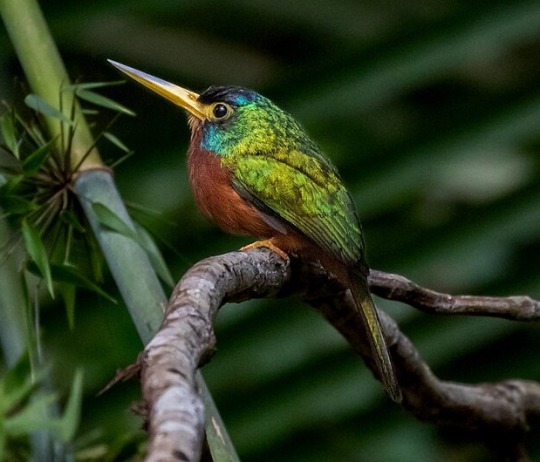
Blue-cheeked Jacamar (Galbula cyanicollis), male, family Galbulidae, Brazil
photograph by Hector Bottai
1K notes
·
View notes
Text
Radinopsyche Whitney et al., 2021 (new genus)

(An individual of Radinopsyche sellowi, photographed by Hector Bottai, under CC BY-SA 4.0)
Meaning of name: Radinopsyche = slender being
Species included: R. sellowi (caatinga antwren, type species, previously in Herpsilochmus)
Age: Holocene (Meghalayan), extant
Where found: Woodlands and forests in eastern and central Brazil
Notes: Radinopsyche sellowi is a small antbird that was only recognized as a distinct species from the Bahia antwren (Herpsilochmus pileatus) in 2000. A new study finds that it is likely more closely related to the white-bearded antshrike (Biatas nigropectus) than to the species in the genus Herpsilochmus. Given that the caatinga antwren is easily distinguishable from the white-bearded antshrike in appearance, call, and ecology, the authors chose to coin the new genus Radinopsyche for it instead of reassigning it to the genus Biatas.
Reference: Bravo, G.A., B.M. Whitney, R. Belmonte-Lopes, M.R. Bornschein, N. Aristizábal, R. Beco, J. Battilana, L.N. Naka, A. Aleixo, M.R. Pie, L.F. Silveira, E.P. Derryberry, and R.T. Brumfield. 2021. Phylogenomic analyses reveal non-monophyly of the antbird genera Herpsilochmus and Sakesphorus (Thamnophilidae), with description of a new genus for Herpsilochmus sellowi. Ornithology advance online publication. doi: 10.1093/ornithology/ukab025
9 notes
·
View notes
Photo

A new variant has been added!
Brown-bellied Stipplethroat (Epinecrophylla gutturalis) © Hector Bottai
It hatches from brownish, common, dead, overall, pale, small, thin, and tiny eggs.
squawkoverflow - the ultimate bird collecting game 🥚 hatch ❤️ collect 🤝 connect
2 notes
·
View notes
Photo

A new variant has been added!
Klages's Antwren (Myrmotherula klagesi) © Hector Bottai
It hatches from black, compact, double, male, short, similar, tiny, and white eggs.
squawkoverflow - the ultimate bird collecting game 🥚 hatch ❤️ collect 🤝 connect
3 notes
·
View notes
